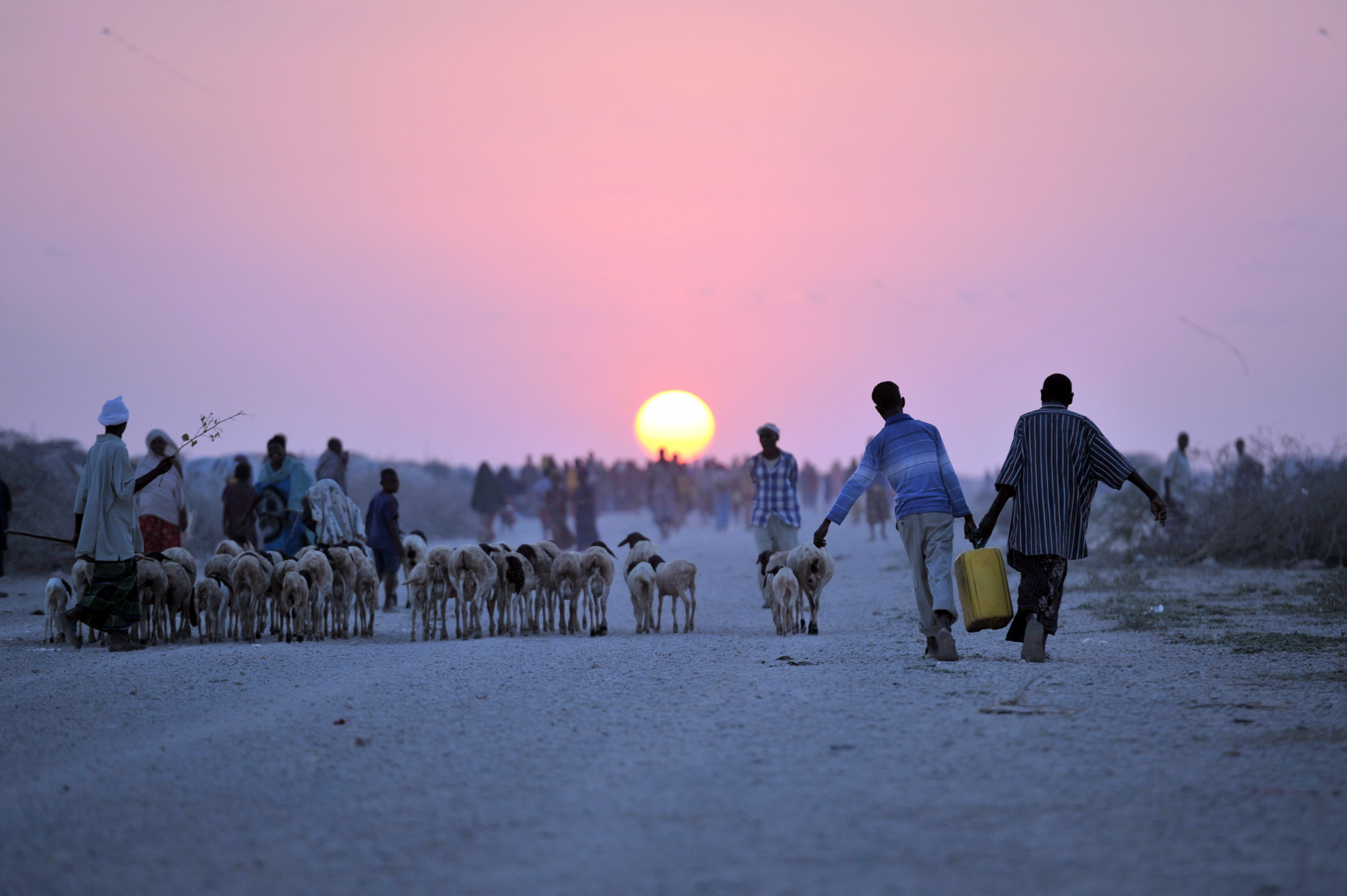Social situation Humanitarian crisis
Two boys carry a water canister next to a flock of sheep near Jowhar, Somalia.
More than seven million people – almost half the country’s inhabitants – were facing a food crisis in the early summer of 2022 as a result of a protracted drought. The UN Humanitarian Coordinator in Somalia, Adam Abdelmoula, warned in June 2022 that more than 200,000 people were facing starvation. It is estimated that 1.5 million children under the age of five are acutely malnourished.
According to figures from UNHCR, the UN Refugee Agency, at that time around three million people were internally displaced. Of the 584,000 people who left their homes between January and April 2022, 526,000 were displaced by the impacts of drought. More than 80 per cent of them were women, children and older people. UNHCR has announced that support in the amount of 157 million US dollars is needed. By June 2022, the international community had only made available twelve per cent of the amount needed.
Strong rural exodus
Besides the violence prevailing throughout the country, droughts are also a reason for the continuing rural exodus. Almost 50 per cent of Somalia’s population now lives in towns and cities; in 1990 that figure was 30 per cent. This strong level of growth means that many towns and cities are struggling to provide services for the people living in them.
State infrastructure in Somalia is in its infancy. Many services like water and electricity, health and education are in private hands and available only against payment. Many people depend on financial support from family members living abroad in order to survive.
When the Somali state collapsed in the 1990s, the clans took over important economic and social functions, which are still in their hands to this day – leading to frequent conflicts over political and economic control, land ownership and the use of resources.
Deficits in education and employment
Each year, Somalia’s population grows by nearly three per cent. Almost half of the country’s inhabitants are below the age of 15. They lack educational opportunities and job prospects. According to official figures, unemployment is 20 per cent, but experts estimate that it is far higher. Among young adults, more than two thirds are unemployed. Women and internally displaced people in particular are excluded from economic life.
The education level is low. About half the population of Somalia is illiterate. According to figures from UNICEF, fewer than 30 per cent of school-age children attend primary school. Even fewer manage to move on to secondary school. According to the government, one reason for the country’s poor performance compared to other countries in the region is a social phenomenon: regardless of the security situation and the distance to be covered to get to school, many Somali children start primary school late because of parents’ perception that children aged six to nine are too young to attend school.
As at: 16/08/2022
